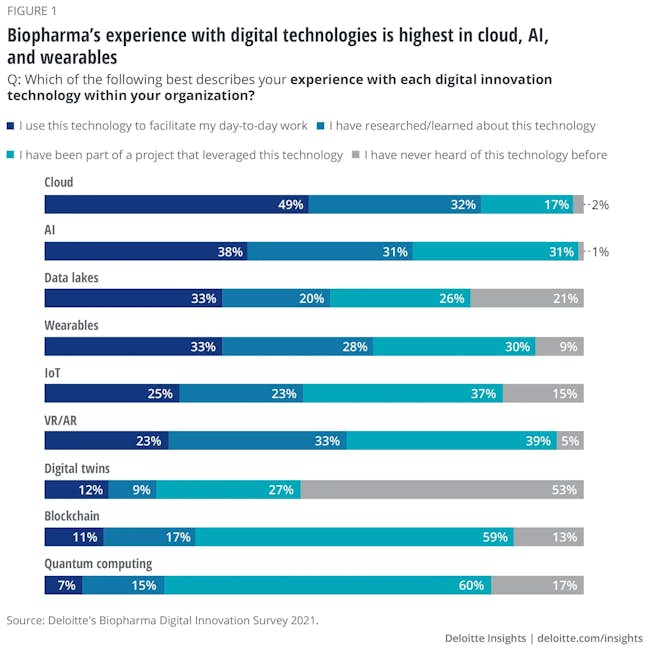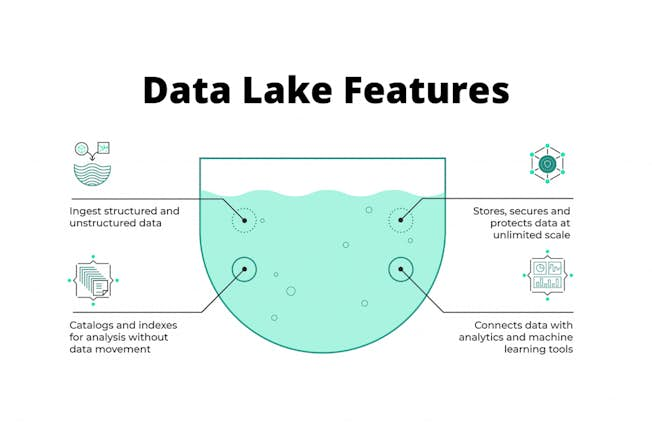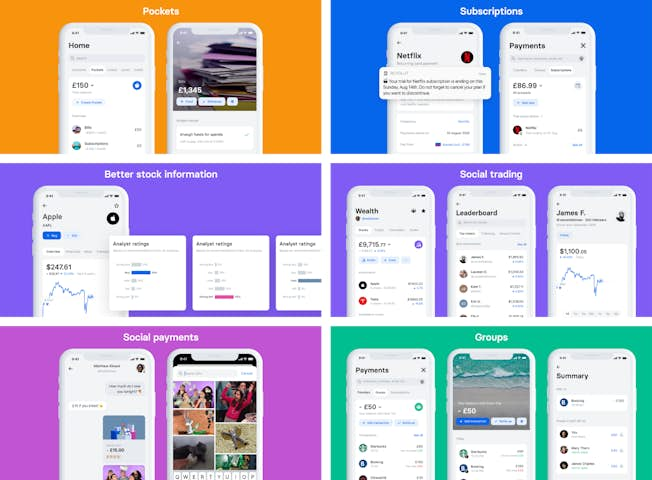Jun 21, 2022
How Pharma, Telecoms, Finance & Governance are Navigating Digital Transformation
Digital transformation is underway in many organizations, as companies exploit the opportunities and benefits presented by digital technology to build their brand, connect with customers, and enhance sales models.
However, there are some differences from one industry to the next. The culture, systems, processes, and capabilities of each industry all come into play when embarking upon digital transformation. As a result, the pace at which industries are changing differs.
In this article, we take a closer look at four major industries - pharma, telecoms, finance and governance (as well as government) - that are leveraging digital to drive business success, and consider what challenges and opportunities the future holds for each.
Have a read of our recent blog for a refresher on What is Digital Transformation? A Guide for Businesses.
Health & Pharma
Traditionally, the health and pharma industry has been slow to incorporate digital technologies. However, at the start of the Covid-19 pandemic, pharma companies prioritized investments in digital innovation and incorporated it across the business.
According to Deloitte’s survey of biopharma leaders, their organizations need to solve fundamental issues such as dedicated funding (59%), a better digital innovation strategy (49%), and the right talent (47%) to scale digital innovation. In addition, certain digital technologies such as the cloud, AI, data lakes and wearables have been adopted in day-to-day operations while others such as quantum computing and digital twins are still nascent.

With the internet offering people information at the touch of a button, patients behave differently today. Eurostat found that 53 percent of EU citizens sought online health information related to injury, disease, nutrition, or improving health. As patient behavior changes, the pharma industry has responded. Now, with digital at the forefront of their strategies, innovative practices are helping to enhance healthcare.
Our recent podcast dives into healthcare marketing if it’s an area you are interested in.
Use cloud for data storage and analytics
Cloud technology has enabled pharma companies to provide scalability and agility so employees can collaborate, securely store and share data, build data lakes, and run AI and machine learning (ML) algorithms.
Global pharma company Takeda recently collaborated with Accenture and AWS to take a cloud-first technology approach. Speaking on the move to adopt cloud technology, Takeda’s CEO, Christophe Weberda said: “My vision is to deliver transformative therapies and better experiences to patients, physicians, and payers faster than previously possible.”
A cloud approach will help the pharma industry to:
- Enable data and analytics
- Allow demand forecasting
- Standardize processes
- Enhance scale
- Reduce integration time and costs
- Reduce technology and innovation cycles
- Harness the power of Artificial Intelligence (AI) for R&D and clinical trials
Global AI in the pharma market is expected to grow to $2.8 billion in 2025 at a rate of 32.9% and reach $9.1 billion in 2030. The reason for the growth?
It is helping pharmaceutical companies to improve clinical trials, enable predictive power in the R&D process and can elevate pharma manufacturing.
AI can help reshape business models, streamline biopharma manufacturing and enhance research processes from molecule research to clinical trial data flow. It can also enable predictions in the R&D process and enhance manufacturing.
From a communications perspective, AI can aid in enabling a more personalized approach with healthcare professionals, clients or vendors and patients.
Global healthcare provider Abbot recently launched a new coronary imaging platform powered by AI that offers physicians a comprehensive view inside an artery or blood vessel. This will help to detect the severity of calcium-based blockages and enhance the precision of coronary stenting procedures.
Check out our case study on Walgreens to find out how a global pharma retailer is transforming to adapt to digital acceleration.
Harvest and analyze data in data lakes
The volume of data generated in the pharma industry is colossal and as a highly regulated sector, security is crucial. To protect and store this information data lakes are centralized repositories that store structured and unstructured data at any scale.
Data lakes support a diverse set of analytic functions, from SQL querying of data to real-time analytics to machine learning use cases. The illustration below from lakeFS shows the structure of a data lake and the four main components - metadata, compute, format and storage.

The number of organizations in the pharma industry using data lakes has increased since 2010 and this has the potential to transform the life sciences industry as it can help uncover insights, predict business results, and data-driven decision making.
Use wearable technology for patient insights
The technology used by consumer wearable devices like Fitbit or Apple Watch gives patients more responsibility in looking after their health to track sleep, heart function or physical activity.
However, wearables have a bigger future with experts predicting an increase in their use in clinical trials. A Kaiser Associates & Intel study projects that up to 70 percent of clinical trials will incorporate wearable sensors by 2025.
The advantage of wearables is that clinical trials rely on rich patient data which is difficult to capture in a doctor’s office. In contrast, wearables track consumer data over time so can provide rich data sets and opportunities to gain more meaningful insights.
Potential applications in this area are smart clothing (e.g. smart vests, smart bras, smart shoes) to help monitor chronic diseases. Powercast and Liquid X recently entered a joint venture to help manufacturers integrate wireless power functionality into durable, flexible, high-performance, and washable e-textiles.
For more information on this sector, read our blog ‘6 Ways Digital is Transforming Pharma and Healthcare’.
2) Telecoms
In 2009, there were less than half a billion global smartphone users. Fast forward to today and that figure is over 6.5 billion and projected by Statista to grow to nearly 7.7 billion in 2027. The telecommunications industry is transforming at an incredible rate, and businesses around the world know it.

An early investor in digital technology, the telecoms sector has used digital to tap into new business models and a globally connected network to access real-time data, customer support and social programs to enhance user experience.
According to ’A blueprint for telecom’s critical reinvention’, the next generation of telcos will be defined by leaders who act now, risking short-term incumbency advantages to seize untapped growth. This demands a holistic, future-back approach to transformation, in which leaders deliver on four or five bold, integrated changes.
- Customer engagement - Today’s consumers expect more from telecoms services and telecoms companies need to capitalize on recent behavioral shifts (remote working, sustainability focus, connectivity) to rethink their approach to serving and satisfying customers.
- Network, IT and data - The success of telco and IT companies require the industry to leverage data and deploy advanced analytics and use AI and automation at scale to drive new revenue streams.
- In-house expertise - It’s crucial to have experienced and knowledgeable staff to drive digital transformation. Decision-making and critical thinking are particularly important to enable growth and innovation.
- Role in society - During the pandemic, this industry was pivotal in enabling communication and creating features like contagion maps and virtual clinics. This role can be cemented and expanded on to have a positive role in society.
- The core business - With the acceleration of new technologies such as hybrid networks, edge computing, and cloud migration the industry will need to change how they monetize their assets.
A prime example is telecom provider Sprint which was losing money and struggling to compete until it decided to reinvent itself in 2015. The company created a five-year turnaround plan which cut billions of dollars in costs and increased investment in its network. Key areas of focus for Sprint were customer service channels, AI and data analysis.
Sprint’s CIO, Scott Rice says of their transformation journey: “We’ve struggled for many years, so we knew that if we wanted to compete, we had to focus quickly on digitizing our applications. Our customers now experience better service through digitization, because they have more choice and it is much more convenient. However, technology always changes so we must have a continuous improvement mindset – we’re always looking for the next great idea and best solution for our customers.”
This is a mobile-first world now. Telecom and IT companies must shift their practices to become more customer-centric. Those who do will be in a better position to avail of the opportunities digital presents.
3) Finance
The development of digital is changing the finance industry in many ways. Technologies like cloud computing, blockchain, analytics, and robotics are among the most innovative digital tools predicted to revamp the core of banking and finance by 2025.
Now, human error is less likely as machine learning and robots take over. People have financial management at their fingertips, and digital is at the heart of all interactions.
From mobile banking apps, cashless commerce and smart ATMs to virtual assistants and chatbots, the future of finance and banking is already quickly taking shape.
Sooner rather than later, human staff will be reduced to a minimum in banking. Not only can the technology help to get certain jobs done faster but there is widespread consensus it can offer a superior user experience. While automation and technology will replace jobs, new skills will be required in the finance industry so companies need to put a plan in place to upskill workforces.
So what are the main areas that will help drive digital transformation in the finance sector?
- Touchless transactions
- Automation and blockchain to enable improved processes and analytics
- Self-service
- Real-time finance rather than reliant on cycles
- New combinations of technology and human workforces
- Enterprise resource planning
- Clean up and use of data
Just think about the disruptor Revolut, a digital banking and payments start-up now valued at £24 billion with 15 million users. As an early entry into crypto-currency markets, the digital bank has a mission to create a global financial super-app that enables paid subscribers to manage their financial needs through a single platform.

This model threatens conventional financial institutions as its technology combines retail and business banking and enables customers to self-service and use touchless transactions. However, experts believe the challenge for ‘neobanks’ like Revolut is that very few people get their salaries paid into these accounts, relying on traditional lenders instead.
Read our blog to find out about ‘7 Fintech Trends that Will Shape the Future of Banking’.
4) Governance
Deloitte Insights reports that over 76 percent of surveyed public sector leaders across countries see that digital technologies are disrupting the sector. However, only 41 percent are satisfied with their organization’s reaction to digital trends.
The problem with the governance sector is that, like healthcare, they are highly regulated and possess a lot of sensitive data. But there are great reasons this sector should invest in digital transformation:
- Improve structures and processes
- Protect customer data
- Speed up tasks and processes
- Engage and upskill its workforce - the people part of digital transformation
- Drive new and value-generating models for its citizens
There are a number of digital technologies that can accelerate the transformation in the governance sector.
Harness cloud technology
Cloud technology allows this sector to tap into more data sources and analyze it. It also enables scalability, reduces costs, improves agility and flexibility and heightens security.
Analyze citizen data
Government agencies have a wealth of citizen data which is often siloed and unconnected. A better understanding of data and linking of sources would enable this sector to deliver personalized services and messaging to its citizens.
Use defensive cyber security
Cyberattacks are on the rise globally and government agencies need to do more to protect their data. The answer is a mix of technology and personnel. Software is required to prevent hacks alongside monitoring, vulnerability searches and ongoing testing, but staff across departments should be trained in cybersecurity to avoid human error (i.e. opening a malicious email.)
Enhance mobility
In this sector mobility is the ability to deliver access to capability and applications to and from a range of devices, such as delivering services to citizens anywhere and at any time. 5G offers enhanced mobility and can be used by this sector as it offers faster connections and low energy consumption.
“The European Commission adopted a ‘cloud-first’ approach based on a hybrid cloud service to become a user-focused, data-driven digital organization by 2022 ” The European Commission Cloud Strategy
Accelerate the digital transformation of your business
Whether your business is at the start of its digital transformation or in the middle, it’s important to bring your workforce with you. We specialize in helping businesses and workforces grow by building digital capabilities and cultivating a digital mindset. Contact us today to talk to one of our digital transformation consultants to see what we can do for you.
Updated 2022
- Categories:
- Articles
- Digital Management and Leadership
Upgrade to Power Membership to continue
your access to thousands of articles, toolkits, podcasts, lessons and much much more.
Become a Power Member- Login
- View Courses
- - - -
- Courses
- Resources
- - - -
- My Account
- Change Password
- Logout




